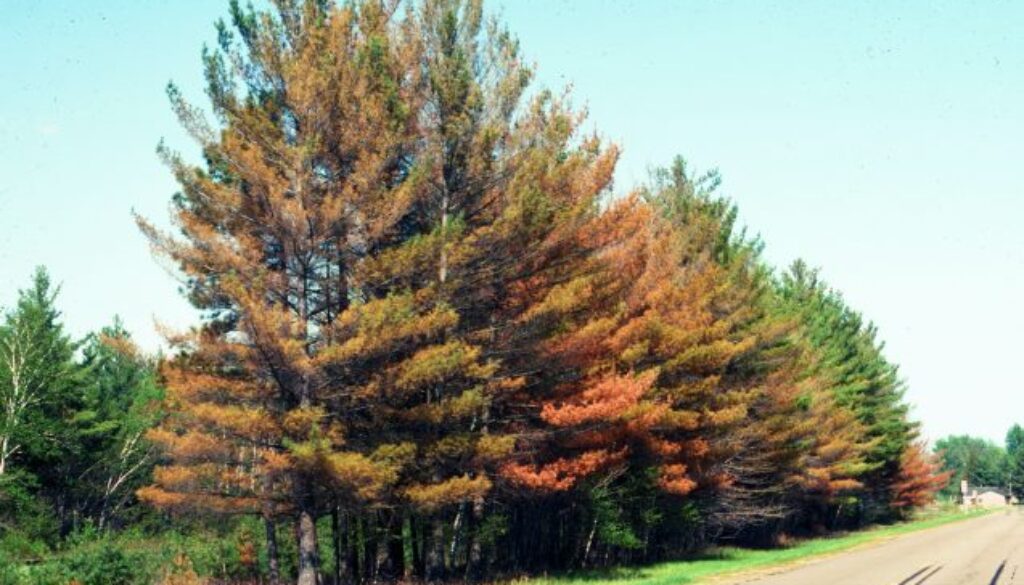De-Icing Salt Can Harm Landscape Plants
De-Icing Salt Can Harm Landscape Plants
Each winter, vast quantities of de-icing salt are applied to state and municipal roads to keep them safe for commuters, and salt is spread near houses to avoid pedestrian injuries. This is necessary for safety, but did you know excessive salt can cause widespread damage to trees and shrubs – possibly leading to permanent decline and even death? De-Icing Salt Can Harm Landscape Plants
Salt can be absorbed by the leaves, stems, and buds of trees. Salt runoff washes from the pavement into the ground, increasing salt levels in the soil, where it then can be taken up by the roots. This salt can cause disfigured foliage, stunted growth, and severe decline in tree health.
Signs of salt damage, even severe damage, might not be visible on a tree until late summer, leaving homeowners wondering what might have caused the problem. In some cases, the decline might not be visible for years.
There are steps you can take to ward off damage to trees from salt. TCIA recommends taking the following measures:
- Avoid the use of de-icing salt unless necessary.
- If you use salt, mix it with abrasives such as sand, cinders, or ash.
- Use de-icing alternatives such as calcium chloride and calcium magnesium acetate.
- Improve drainage of soils. Depending on your soil type, add organic matter such as composted wood chips or bark mulch, and thoroughly leach salt residues from the soil by flushing with water.
- Erect barriers between pavement and plants.
- Plant trees in locations away from any type of salt spray.
- Plant salt-resistant trees in areas where high salt spray is inevitable, i.e., near walkways, driveways, or roads.
Find a professional
A professional arborist like Johnson ops Tree Care can assess your landscape and work with you to determine the best trees and shrubs to plant for your existing landscape, and how best to protect them.




